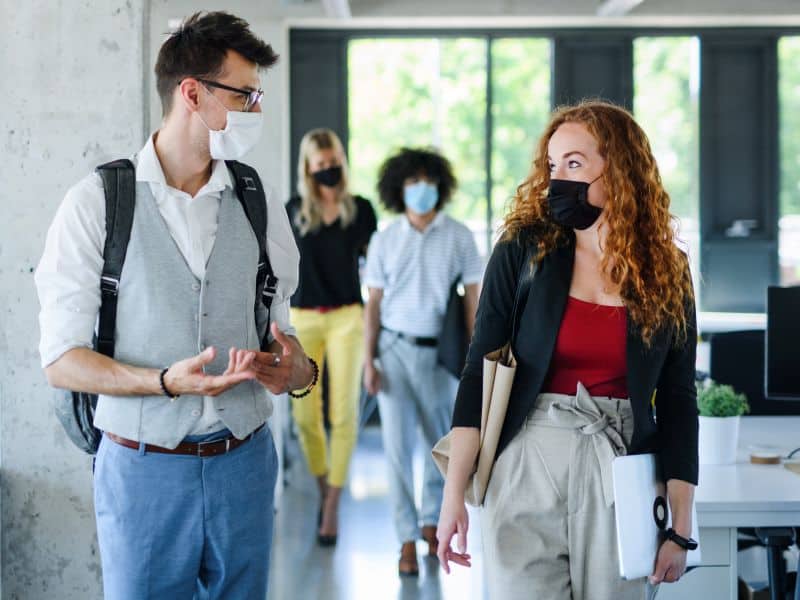FRIDAY, July 17, 2020 (HealthDay News) — A nationwide, coordinated effort is needed to successfully implement widespread wearing of face masks to help slow the spread of COVID-19, according to Robert Brook, M.D., professor of medicine at UCLA and distinguished chair in the health care services program at the RAND Corporation, and May Chu, Ph.D., clinical professor of epidemiology with the Colorado School of Public Health at the University of Colorado Anschutz Medical Campus. They recently spoke with HD Live! about the impending consequences of nonmasking and possible strategies to improve compliance.
“Over 99 percent of the population can wear a mask without having trouble breathing,” said Brook, who emphasized one of the major causes of noncompliance is the lack of an educational campaign in the United States. He said such a campaign is necessary to demonstrate when to wear a mask, how one should properly be worn, how to put one on and take it off, and proper cleaning and care methods. “We haven’t helped the public. We’ve done almost nothing from a public health perspective to tell people how to use this equipment appropriately,” he said.
In lieu of a current cohesive nationwide effort toward masking, Brook offered advice for physicians and health care workers to encourage patients to wear masks. He suggested they focus less on what the message is and more on how to say it. “It’s the way you say it,” noted Brook.
He cited three types of motivation techniques that people respond to: analytics (for people who need information and scientific explanations), altruism (for people who are motivated by needing or wanting to help others), and autocratic motivation (for people who are motivated by wanting to be in control). “We’re not all the same, and that’s the beauty of us, but that’s why it makes it difficult to implement this kind of a policy,” Brook said. He recommends using all three ways of communication in messaging to get the attention of the masses and encourage better compliance with mask wearing.
Chu said performing a risk assessment is a helpful tool when deciding whether or not to mask-up. She explained that masks are most necessary in social situations in which distancing is not possible. “This virus is what I call ‘antisocial.’ It really tries to make us do and behave in a way that is anti to our social norms, so it’s very uncomfortable,” Chu said. However, maintaining social distance and masking are key to curbing the transmission of this extremely contagious virus, she said.
Chu also said that when choosing or making a mask, it is important to consider the mask’s efficiency and breathability. There is validity in using household materials for face masking, Chu said, as there are certain fabrics and combinations that can be used together to create the same efficiency of a surgical-grade mask. Face shields are also effective, but the type of environment in which one will be using a shield should be taken into account.
Convincing the American people of the necessity of preventative measures is critical if there is to be any progress achieved, Brook said. “My goal is to flatten the curve as much as we can and hopefully give the scientists enough time to come up with something so that we don’t keep going through this cycle for the next three years,” he said. “If we flatten the curve and keep flattening it over three years, we’re going to destroy our economy; we’re going to have mental health problems,” he explained. “We hope that science will help get rid of the consequences of this virus. And we hope that it will occur soon.”
Copyright © 2020 HealthDay. All rights reserved.


